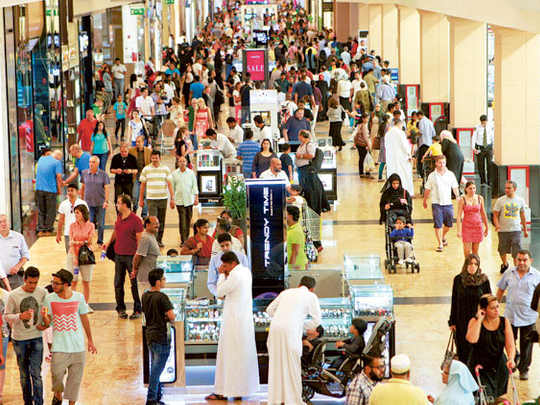
Dubai: The pick up in momentum within the local retail sector is no longer just confined to mall or high-street locations… small outlets on the ground floor of high-rises in Dubai’s key neighbourhoods are scoring high with investors.
Depending on the high-rise it is attached to, an outlet in Dubai Marina can command between Dh1,800-2,500 a square foot, while those in JLT now averages Dh1,500 a square foot. Those in DIFC currently command the highest value, befitting the master-development’s super-premium status, at between Dh2,500-3,000 a square foot.
Ahead of the pick-up in investor and retail interest, average values for outlets at key locations were ranging between Dh900-1,250 a square foot.
“There is a lot more of new small shop stock coming into the market with the completion of several high-rise projects in areas such as Business Bay,” said Kunal Lahori, managing director at Jebel Ali Free Zone based Palmon Group, which owns a portfolio of outlets in freehold clusters. “But there is a clear differentiation — private developers are willing to sell their units while government-owned developers prefer to hold on.
“For investors, these assets can be leased out and thus be in a position to generate recurring income; for retailers it is about making sure they have a presence in an established community that can sustain their business.”
As of now, the equation has not been as clear-cut as might be expected. “Retail outlets in many freehold towers have actually been struggling to build their occupancy rates and improve their rental profile,” said Mohammad Faheem, senior research analyst at CBRE M.E. “Although performance is highly fragmented and location-specific, many projects in emerging masterplanned areas have been constrained by on-going construction activity, lack of developed infrastructure and most importantly the high vacancy rates in other parts of the development.
“This situation, however, is now slowly starting to change as improvements are made to road connectivity and as occupancy rates rise across commercial and residential spaces. As the local population expands, there has been growing demand for community retail offerings, which provide support services and conveniences.
“This, in turn, is resulting in rising demand and rising rents; and this has been most prevalent in developments such as JLT and Tecom C, both of which are now recognised as established communities.”
There are some ground rules that prospective retailers should follow when setting up such shops. “Have a good reading of who the captive market is; usually the lease agreements are for two to three years and that should be the timeline retailers should factor into their plan for their returns,” said Ajai Dayal, CEO of Tridayle Consult, a retail advisory. “An average small outlet, depending on the merchandise, could be spending around Dh300 a square foot on their fitouts and displays. Managing costs is paramount until the retailer can attain a certain level of customer loyalty and cashflow.”
Faheem echoes much the same sentiment — “where retailers have studied the local demographic and positioned themselves correctly, we tend not to see a high turnover of tenants.”












